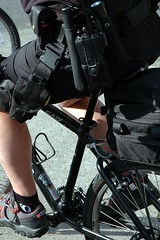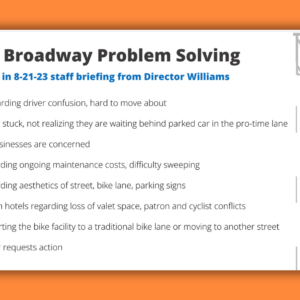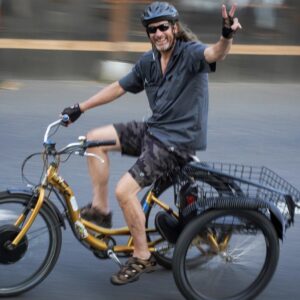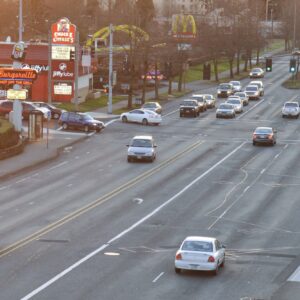Eric Lundgren is a local historian currently researching a book on Portland’s bike history.
As part of that research, he has found an interesting article published by the Oregonian in 1897. The article (pasted below) shows that the sometimes rocky relationship between the police and “wheelmen” is nothing new.
Here is the article:
PROTECTION FOR ABUSED BICYCLISTS – Bicyclists, whose experience has led them to regard the police as their bitter and implacable enemy, will no doubt be pleased to learn that they are mistaken. The fact is, that wheelmen are really very near to the hearts of the police, and the objects of their tenderest solictude.
This is evidenced by an order recently issued to a patrolman to strictly enforce the throwing of glass, nails, and other enemies to the bicyclist’s peace of mind, on streets and sidewalks. Of course, it is well known that ordinances are not supposed to be enforced unless special orders to that effect are given, and wheelmen may feel very grateful to think so much consideration may be given them.
If the ordinance is strictly enforced, the annoying habits of certain misanthropes of placing tacks and bottle necks in the paths of bicyclists will be checked by fine and imprisonment, and soon a wheelman may safely ride through the city without rooting his eyes apprehensively on the sidewalks in front of him.
[Thanks Eric!]







Thanks for reading.
BikePortland has served this community with independent community journalism since 2005. We rely on subscriptions from readers like you to survive. Your financial support is vital in keeping this valuable resource alive and well.
Please subscribe today to strengthen and expand our work.
Just goes to show that as much as things change, they stay the same.
I also like reading older texts because of how much care and thought was placed on the written word.
Great post Jonathan
Now I see all the \”enemies of the bicyclists peace\” of mind on the Interstate viaduct going north towards PIR…what a trash heap!
Or the vehicluar debris from motor vehicle crashes deposited on the Interstate Bridge bike ped paths.
This reminded me of a building sign I got while in Wyoming.
It is a quite older, though I don\’t know the date, lit sign that hung outside of a friends auto mechanic shop, that says\”
\”Casper Wheelmen\”.
I think it is also dated, though I have not had my hands on it for a while.
The shop was obviously at one point the headquarters for them in Casper, Wyoming.
One day it will enlighten the walls of my shop for sure.
Nostalgists get their comeuppance here. Since we were all brought up to think that the policeman is our friend, we might think that there was a time when the world was in sepia-tone and laws were made to be enforced. Note however that in this article from the good old days laws were not enforced until the cop was told to enforce them. How futuristic!
of course, its important to remember that while by 1897, the bicycle had become quite a bit more available across the class spectrum than it had been in the 1880s and earlier, the membership of most wheelmen organizations was quite substantially drawn from the upper classes, with more than a few public figures and officials amongst them, and as such, their influence in the civic arena was comparatively greater than ours is now…
regardless, their younger members probably had their run-ins with police and the general public – thus the \”bitter enemy\” comment – and such conflicts undoubtedly involved that ancient argument, which raged in those day, and which, thankfully, was settled back then, never to be discussed again…
… namely, whether or not riding their fixed gear bicycles without a brake was safe.
I love Joel….
A book, eh…. any thoughts on when it\’ll be out? I\’d love to get my hands on a copy!
In February I\’m going to be giving a brown bag talk on the ways the first bike paths were funded – info forthcoming. I\’m also working on a longer treatment of the early bicyclist-police relations. I\’ve found some information on early sting operations to catch bicyclists violating the lantern ordinance, for example. The police also protected bicyclists by keeping teams, livestock, and sharp debris off the paths. It\’s an interesting history having suggestive parallels and important differences with today.